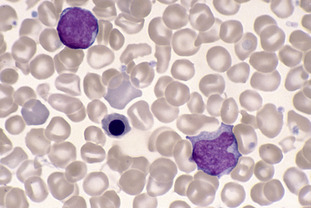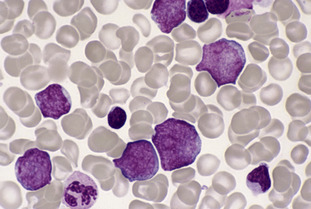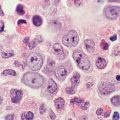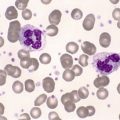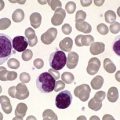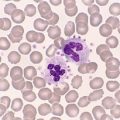C4. Myeloproliferative neoplasms in the neonate and childhood
Transient abnormal myelopoiesis (TAM)
Transient abnormal myelopoiesis may occur in the neonatal period. It is often associated with Down syndrome (trisomy 21) and morphologically closely resembles AML. TAM is characterised by an uncontrolled proliferation of blasts that regress spontaneously within weeks or months. This myeloproliferative disorder is associated with a hepatosplenomegaly. The haemoglobin is usually normal while the platelet count is reduced.
TAM may be confused with congenital leukaemia in the initial stages or until spontaneous remission occurs within the first 3 months of life. Twenty-five per cent of cases of TAM will go on to develop acute megakaryoblastic leukaemia by the age of 3 years. In approximately 20–30% of cases with Down syndrome, the blast cells will persist and a true congenital leukaemia will develop. Acute lymphoblastic as well as acute myeloblastic leukaemia may occur in children with Down syndrome. The most frequently occurring myeloblastic leukaemia is megakaryoblastic leukaemia. Refer to Figure C4-1, Figure C4-2, Figure C4-3, Figure C4-4 and Figure C4-5.
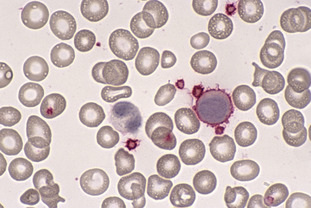 |
Figure C4-3
Stay updated, free articles. Join our Telegram channel
Full access? Get Clinical Tree
 Get Clinical Tree app for offline access
Get Clinical Tree app for offline access

|
